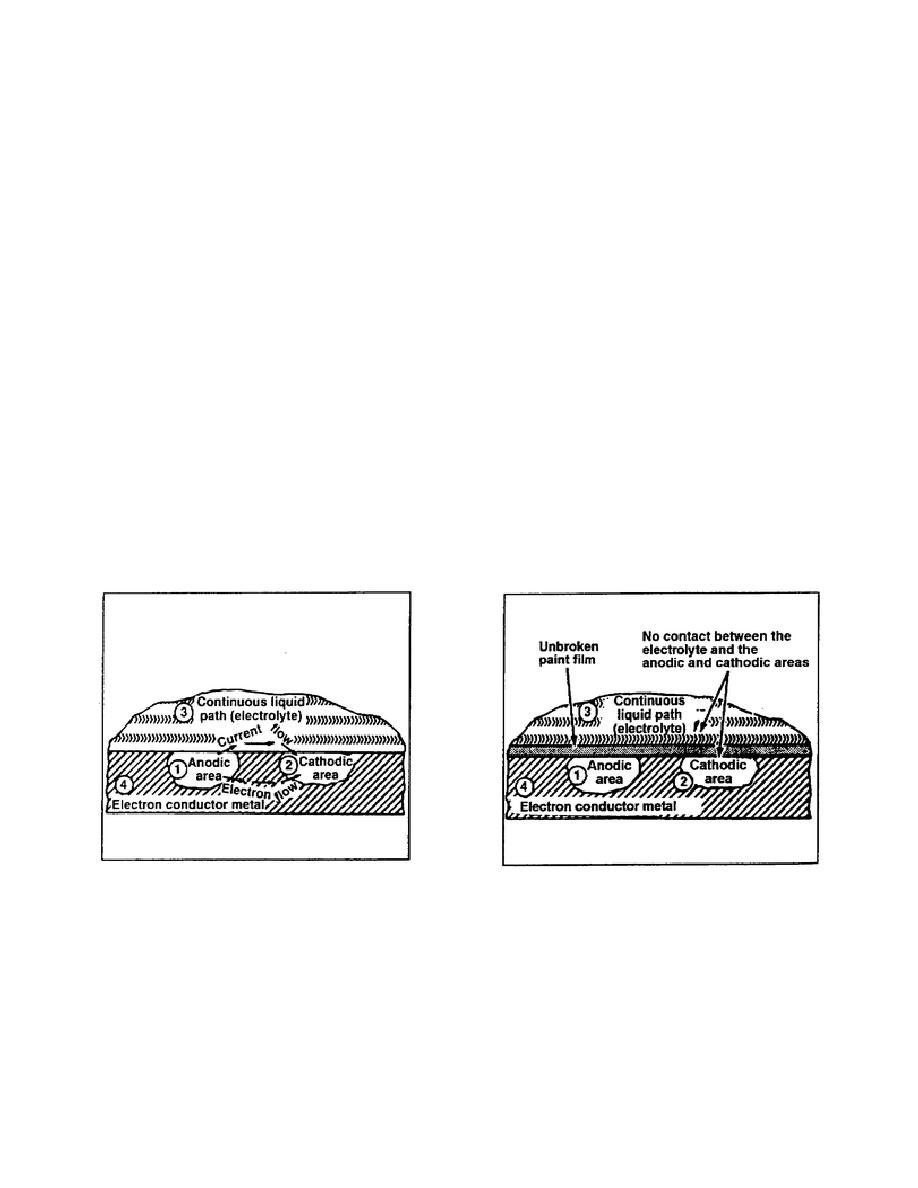
A metal anode is the device that corrodes. An anode is a positive electrode of an
electrochemical cell or the level at which oxidation occurs. The electrodes leave a
device to enter the external circuit. An electrode is defined as a conductor (as a
metallic substance or carbon) used to establish electrical contact with a nonmetallic
portion of a circuit (as in an electrolytic cell).
A cathode is the condition that causes the corrosion. A cathode is a negative
electrode of an electrochemical cell or the level at which reduction (corrosion) occurs.
The electrodes enter a device from the external electrical circuit.
An electrolyte is a nonmetallic conductor in which current is carried in a continuous
liquid path (the external electrical circuit). An electrolyte provides an environment in
which the corrosion process develops. The electrolyte is usually in the form of
condensation and salt or other contaminants.
A conductor is required to carry the flow of electrons from an anode (anodic area) to
a cathode (cathodic area). A conductor is usually in the form of metal-to-metal
contact, such as rivets, bolts, and welds.
The four conditions required for the corrosion process are shown in Figure 5-2. Elimination of any of
the four conditions will automatically stop the corrosion process. For example, an organic paint film on
the surface of metal will prevent an electrolyte (corrosion path) from connecting the cathodic and anodic
areas and a current cannot flow; therefore, no corrosion occurs (Figure 5-3).
Figure 5-2. Electrochemical-corrosion
Figure 5-3. Paint film preventing
condition
corrosion
(2) The possibility of corrosion problems and the necessity for control measures will vary
accordingly because some metals are more subject to corrosive action than others. A corrosive attack
begins on a metal surface that is exposed to a corrosive environment. If
5-3
EN0562



 Previous Page
Previous Page
